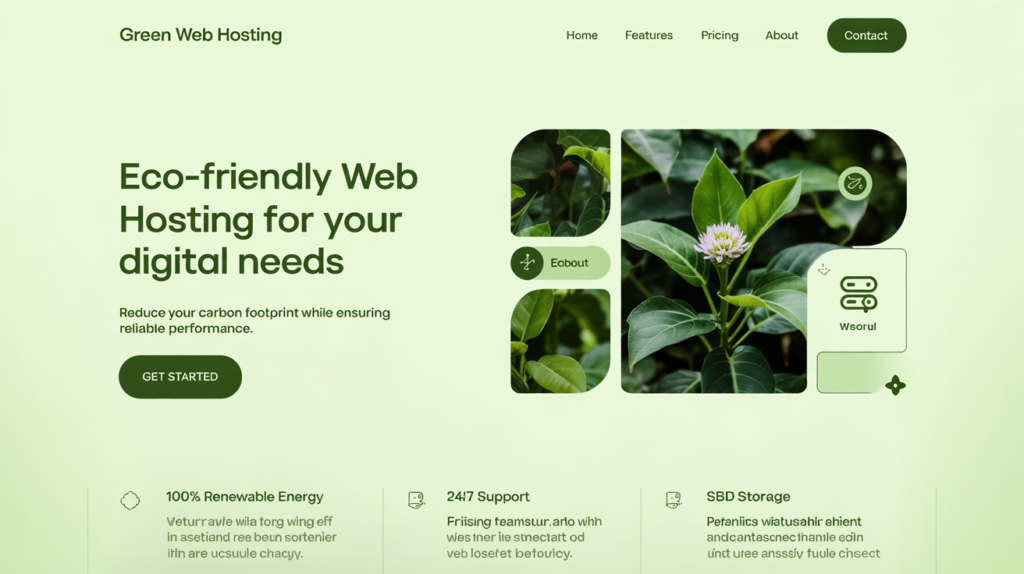Currently, the internet is an integral part of our lives, from personal blogs to large e-commerce platforms, websites are the backbone of online presence. However, many people often overlook the environmental impact of web hosting; traditional web hosting relies heavily on data centers that consume massive amounts of energy, contributing to carbon emissions and environmental degradation. As awareness of climate change grows, many businesses and individuals seek eco-friendly alternatives. This has led to the rise of green web hosting providers that prioritize sustainability by using renewable energy, carbon offset programs, and energy-efficient technologies.
This blog post will help navigate through the concept of green web hosting, its benefits, and provide a detailed comparison of some of the top green web hosting providers in the market.
What is Green Web Hosting?
Green web hosting refers to hosting services that minimize their environmental impact by using renewable energy sources, energy-efficient hardware, and carbon offset programs. These providers aim to reduce the carbon footprint associated with running data centers, which are typically energy-intensive due to the need for constant cooling and power supply.
Key Features of Green Web Hosting Providers
1. Renewable Energy Usage: Hosting providers power their data centers using solar, wind, or hydroelectric energy.
2. Carbon Offsetting: Companies invest in environmental projects to offset their carbon emissions.
3. Energy-Efficient Infrastructure: Use of energy-efficient servers, cooling systems, and hardware.
4. Sustainability Certifications: Some providers are certified by organizations like the EPA’s Green Power Partnership or the CarbonNeutral Protocol.
5. Eco-Friendly Practices: Beyond energy usage, some providers adopt sustainable business practices, such as recycling and reducing waste.
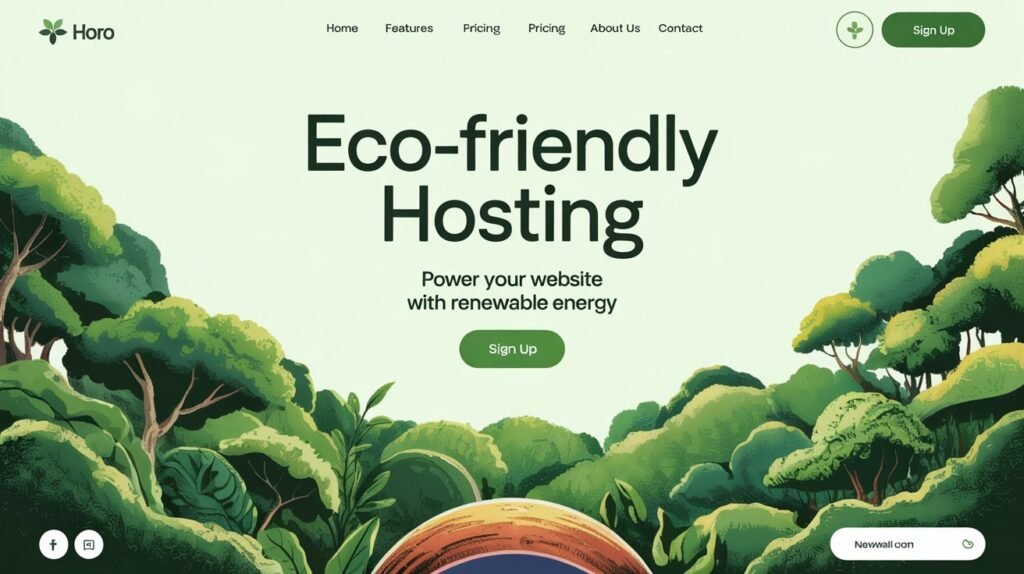
Why Choose Green Web Hosting?
#1. Reduce Your Carbon Footprint: By choosing a green web hosting provider, you contribute to reducing the demand for fossil fuels and lowering greenhouse gas emissions. This is especially important for businesses that want to align their operations with environmental sustainability goals.
#2. Enhance Your Brand Image: Consumers are increasingly drawn to eco-conscious brands. Using a green hosting provider can enhance your brand’s reputation and appeal to environmentally aware customers.
#3. Support Renewable Energy Initiatives: Your hosting fees can directly support the growth of renewable energy infrastructure, helping to accelerate the transition to a greener economy.
#4. Competitive Performance: Green hosting providers often use state-of-the-art technology to ensure their services are as efficient as possible. This means you don’t have to sacrifice performance for sustainability.
Read Also: Best Hosting for High-Traffic Websites.
Top Green Web Hosting Providers
To help you choose the best green web hosting provider, we’ve compared some of the leading options based on their sustainability practices, features, pricing, and performance.
#1. GreenGeeks: Sustainability GreenGeeks is one of the most well-known green hosting providers. They purchase 3 times the amount of energy they consume in the form of renewable energy credits (RECs), effectively putting energy back into the grid.

Features:
- Unlimited bandwidth and storage
- Free domain for the first year
- Free SSL certificate
- 24/7 customer support
- Performance: GreenGeeks uses SSD-based storage and LiteSpeed servers for fast loading times.
- Pricing: Starts at $2.95/month for shared hosting.
- Certifications: EPA Green Power Partner.
#2. SiteGround: Sustainability: SiteGround is committed to reducing its carbon footprint by using energy-efficient hardware and partnering with Google Cloud, which matches 100% of its energy consumption with renewable energy.
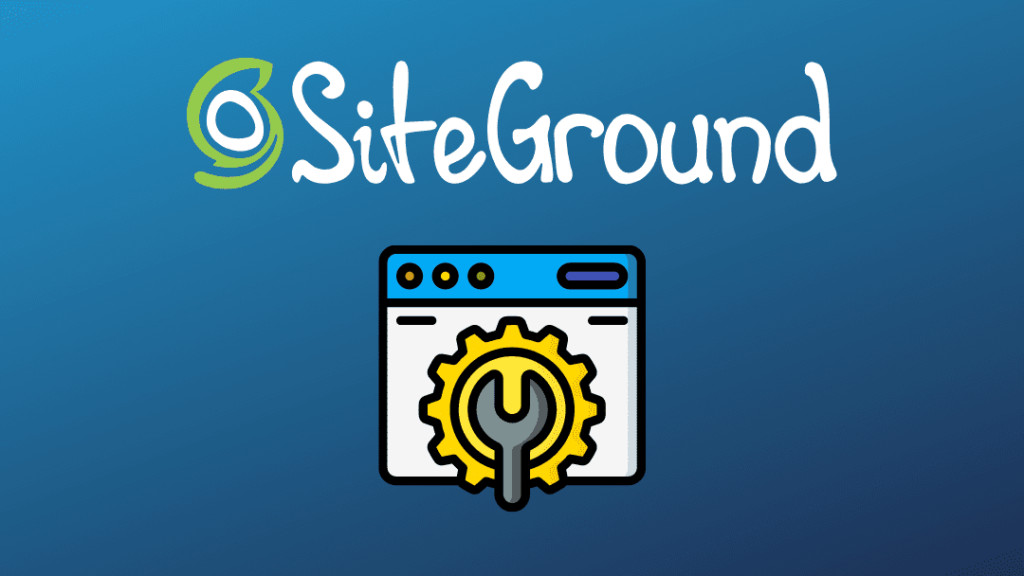
Features:
- Free daily backups
- Free CDN and SSL
- Managed WordPress hosting
- Excellent customer support
- Performance: SiteGround is known for its fast loading speeds and reliable uptime.
- Pricing: Starts at $3.99/month for shared hosting.
- Certifications: Google Cloud’s commitment to carbon neutrality.
#3. A2 Hosting: Sustainability: A2 Hosting offsets its carbon emissions through Carbonfund.org and uses energy-efficient servers.
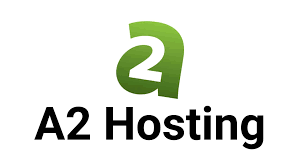
Features:
- Turbo servers for faster performance
- Free site migration
- Anytime money-back guarantee
- Free SSL and SSD storage
- Performance: A2 Hosting’s Turbo servers offer up to 20x faster page loads.
- Pricing: Starts at $2.99/month for shared hosting.
- Certifications: Carbonfund.org partner.
# 4. DreamHost: Sustainability DreamHost is powered by 100% renewable energy and is committed to reducing its environmental impact through energy-efficient practices.

Features:
- Unlimited bandwidth
- Free domain and SSL
- WordPress pre-installed
- 97-day money-back guarantee
- Performance: DreamHost offers solid performance with a 100% uptime guarantee.
- Pricing: Starts at $2.59/month for shared hosting.
- Certifications: EPA Green Power Partner.
#5. Kualo: Sustainability: Kualo is a carbon-neutral hosting provider that uses renewable energy and invests in reforestation projects.
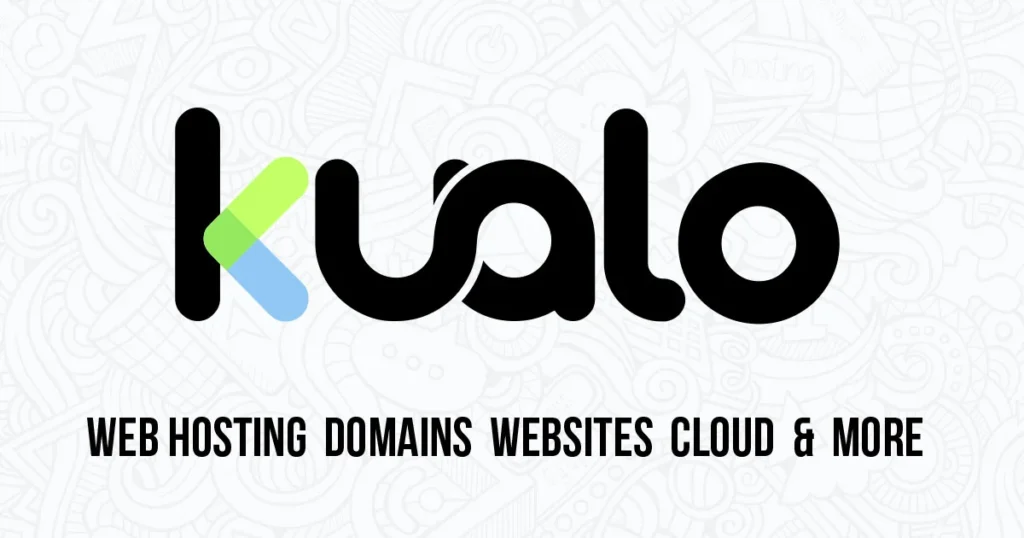
Features:
- Free website migration
- Free SSL and daily backups
- Unlimited bandwidth
- 24/7 customer support
- Performance: Kualo offers reliable performance with a focus on sustainability.
- Pricing: Starts at $3.95/month for shared hosting.
- Certifications: Carbon-neutral certified.
#6. iPage: Sustainability: iPage purchases wind energy credits to offset its carbon footprint.

Features:
- Unlimited bandwidth and storage
- Free domain for the first year
- Free SSL certificate
- Drag-and-drop website builder
- Performance: iPage offers decent performance for small to medium-sized websites.
- Pricing: Starts at $1.99/month for shared hosting.
- Certifications: EPA Green Power Partner.
Read Also: SiteGround vs Bluehost vs HostGator
Factors to Consider When Choosing a Green Web Hosting Provider
While sustainability is a key factor, there are other important considerations when choosing a green web hosting provider:
#1. Performance and Uptime: Ensure the provider offers reliable uptime (99.9% or higher) and fast loading speeds. Look for features like SSD storage, CDN, and optimized servers.
#2. Pricing and Plans: Compare pricing plans to find one that fits your budget. Be sure to check for any hidden fees or renewal rates.
#3. Customer Support: 24/7 customer support is essential for resolving technical issues quickly. Look for providers with multiple support channels (chat, email, phone).
#4. Scalability: Choose a provider that offers scalable plans, so you can upgrade as your website grows.
#5. Security Features: Look for features like free SSL certificates, daily backups, and malware protection.
#6. Ease of Use: A user-friendly control panel and one-click installs for popular platforms like WordPress can make managing your website easier.
Conclusion
Switching to a green web hosting provider is a simple yet impactful way to reduce your environmental footprint while maintaining a high-performing website. By choosing a provider that prioritizes renewable energy and sustainable practices, you can contribute to a healthier planet and align your online presence with eco-friendly values.
From our comparison, GreenGeeks stands out as a top choice for its robust sustainability initiatives and competitive features. However, providers like SiteGround, A2 Hosting, and DreamHost also offer excellent green hosting solutions with strong performance and reliability.
Ultimately, the best green web hosting provider for you will depend on your specific needs, budget, and sustainability goals. By making an informed choice, you can enjoy the benefits of a fast, reliable website while supporting a greener future for the planet.
Call to Action: Ready to make the switch to green web hosting? Explore the providers mentioned in this guide and take the first step toward a more sustainable online presence today!

